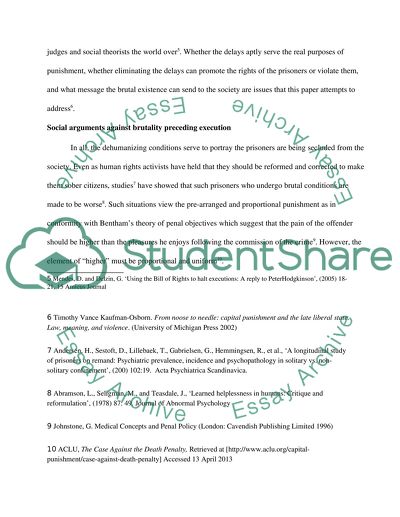Cite this document
(“The death penalty, when preceded by long confinement and administered Essay”, n.d.)
Retrieved from https://studentshare.org/law/1620968-the-death-penalty-when-preceded-by-long-confinement-and-administered-bureaucratically-dehumanises-both-the-agents-and-recipients-of-this-punishment-and-amounts-to-a-form-of-torture
Retrieved from https://studentshare.org/law/1620968-the-death-penalty-when-preceded-by-long-confinement-and-administered-bureaucratically-dehumanises-both-the-agents-and-recipients-of-this-punishment-and-amounts-to-a-form-of-torture
(The Death Penalty, When Preceded by Long Confinement and Administered Essay)
https://studentshare.org/law/1620968-the-death-penalty-when-preceded-by-long-confinement-and-administered-bureaucratically-dehumanises-both-the-agents-and-recipients-of-this-punishment-and-amounts-to-a-form-of-torture.
https://studentshare.org/law/1620968-the-death-penalty-when-preceded-by-long-confinement-and-administered-bureaucratically-dehumanises-both-the-agents-and-recipients-of-this-punishment-and-amounts-to-a-form-of-torture.
“The Death Penalty, When Preceded by Long Confinement and Administered Essay”, n.d. https://studentshare.org/law/1620968-the-death-penalty-when-preceded-by-long-confinement-and-administered-bureaucratically-dehumanises-both-the-agents-and-recipients-of-this-punishment-and-amounts-to-a-form-of-torture.


